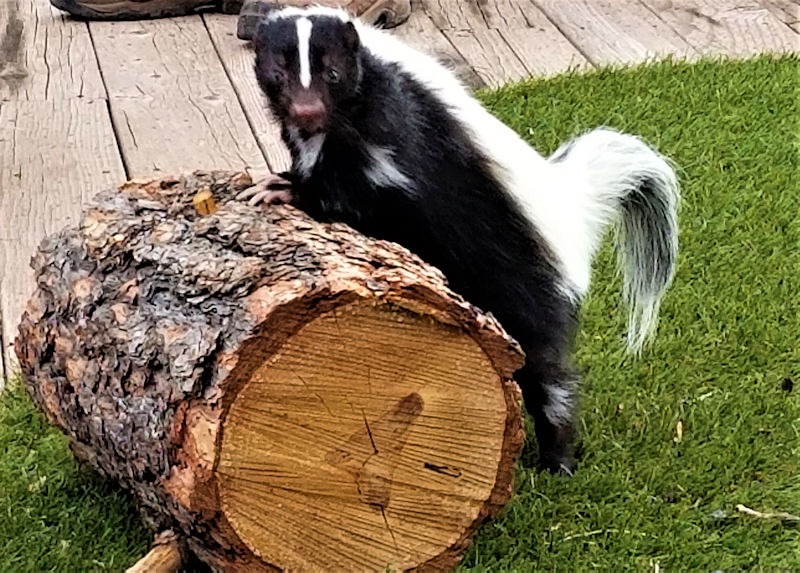Skunks, with their distinctive black and white fur and notorious spray, are a common sight in many areas. While these creatures play a vital role in maintaining ecological balance, having them on your property can pose challenges. To better understand and address this concern, it’s essential to know the common places where skunks may find refuge.
Underneath Decks and Porches
Skunks are opportunistic creatures, and the shelter provided by the underside of decks and porches is particularly enticing. The dark, enclosed space offers protection from predators and the elements, making it an ideal location for skunks to establish a den.
Beneath Sheds and Outbuildings
Sheds and outbuildings provide additional secluded spaces for skunks to nest. These structures offer warmth and security, making them attractive nesting sites for skunks seeking a safe haven for raising their young.
In Garages and Basements
Skunks are resourceful and may explore open garage doors or find their way into basements, especially if there are openings or gaps in the structure. Dark corners and cluttered spaces offer the perfect environment for skunks to establish a hidden residence.
Within Crawl Spaces
Homes with crawl spaces are vulnerable to skunk infestations. These areas, often dark and undisturbed, provide an excellent refuge for skunks. It’s crucial for homeowners to regularly inspect and secure crawl space entrances to prevent unwanted wildlife intrusion.
Amidst Overgrown Vegetation
Skunks are skilled at navigating through vegetation, and overgrown lawns or neglected landscaping can become inviting hideouts. Tall grass, shrubs, and unkempt vegetation offer cover for skunks to move undetected and find suitable nesting locations.
Near Water Sources
Skunks have a preference for areas with access to water sources. Properties near ponds, streams, or even improperly drained areas can attract skunks, as they provide both water and a variety of food sources such as insects, small mammals, and plants.
Around Trash and Compost Bins
Skunks are opportunistic feeders and are often drawn to areas with easily accessible food. Trash cans and compost bins, if not properly secured, can become a regular dining spot for skunks, leading them to establish a presence on your property.
Within Hollow Trees or Logs
In more natural settings, skunks may seek refuge in hollow trees or logs. While these instances might be less common in urban and suburban areas, properties with wooded surroundings should be vigilant in monitoring potential hiding spots.
Along Fences and Property Borders
Skunks are known to be territorial, and property borders, especially those with gaps or openings, can become pathways for skunks to explore. Fences, if not well-maintained, may offer convenient access points for these creatures to enter and establish residency.
In Abandoned Burrows
Skunks are opportunistic nesters and may take advantage of burrows abandoned by other animals. Groundhogs, foxes, or even rabbits may leave behind burrows that skunks find suitable for shelter.
In conclusion, understanding the common places where skunks may be found on your property is the first step in effective wildlife management. Regular property inspections, prompt removal of attractants like unsecured trash, and addressing any structural vulnerabilities can help mitigate the risk of skunk infestations. If you suspect a skunk presence on your property, it’s crucial to consult with a professional wildlife removal service. By working together, we can ensure a harmonious coexistence with these intriguing creatures while maintaining the sanctity of your property.

